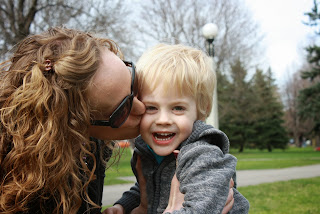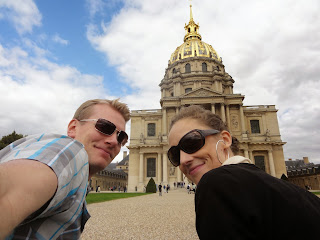In the week since I posted my last blog entry, I have learned quite a few things. Since I’ve never done a triathlon, and I’ve never taken on a major fundraising project, this should not have come as a surprise. But I don’t always think things through before I dive in (you’re shocked, I know). Some of my lessons were funny, some poignant, and some just plain painful. For your reading enjoyment, I’ve compiled a short list.
 |
| My daughter commandeering my cycling shoes. |
- Sometimes the money comes from where you least expect it.
When you do a
fundraiser like this, you think you can predict who is going to donate money
and who won’t. What you can’t predict is that your blog is going to blaze
through social networks like wildfire and people who don’t even know you are
going to lay down huge chunks of money. I have already raised fifty percent of
my goal. In one week. Many of my donors are people I don’t know at all. I am
humbled and grateful and shocked. On the flip side, over 2,000 people read my
last post. If every single one of those people donated just $5 to the cause, I would
have exploded my fundraising goal. Please don’t forget that small acts of
kindness can add up to really big, amazing, life-changing things.
- Learning two new sports, especially when you don’t have a key piece of equipment, is tricky.
True, swimming
is not exactly a new sport for me. But I haven’t done it competitively for
fifteen years. There is some rust to shake off. (OK, a lot.) And I
forgot that I always look like a raccoon for hours after a pool
workout. This is kind of awkward when you have a business meeting immediately afterward. To get around that, I invested in goggles that are more like a
snorkeling mask than actual goggles. I am quite certain that the hardcore
triathletes at my pool are deeply embarrassed for me (I swear I bought them at
a reputable swim shop). So I look like a fool in the water, but at least I
don’t look like a dork afterward. I promise I will get different goggles for
racing.
 |
| If Aquasphere makes them, they must be cool, right? |
As
for cycling, that truly is a new sport for me. The fact that I am currently
training on a heavy mountain bike makes me certain that once I get on a road
bike, I’ll simply be flying. That’s true, right? I’ll be whipping past everyone
on my new steed, when it miraculously appears. Either that or I will be
crashing in a twisted heap of metal because I can’t get out of my pedals in
time, or because I can’t balance on the aerobars. All definite possibilities.
And if my bike doesn’t appear, well, then I’ll be racing on a mountain bike.
Worse things have happened. (In my life, that statement will pretty much always be true.)
- Cyclists have a lot of rules.
 |
| My trusty steed. Perfect for a triathlon, right? |
Also, my sitz
bones were not prepared for the effects of two-hour bike rides. While a long
ride doesn't hurt in the same way as a long run, having something hard wedged
into your rear end for two hours is really not the most pleasant thing on
earth. You know what else hurts? Being passed by an old guy on a commuter bike,
with panniers no less, who doesn't even look like he’s trying very hard.
Clearly I've got a long way to go.
- You need a very understanding spouse to do this.
 Let’s just say
that no one is the best mother or housekeeper after putting in two workouts a day. Between training, fundraising, my business, yoga teacher training, and
writing, I am sufficiently maxed out. I am living out of laundry baskets and
ignoring dirty floors. My husband has endured more pita pizza dinners than he
probably should. But he doesn’t complain. And he fixes my bike. That’s love.
Let’s just say
that no one is the best mother or housekeeper after putting in two workouts a day. Between training, fundraising, my business, yoga teacher training, and
writing, I am sufficiently maxed out. I am living out of laundry baskets and
ignoring dirty floors. My husband has endured more pita pizza dinners than he
probably should. But he doesn’t complain. And he fixes my bike. That’s love.- Not everyone sees things the way you do.
Honestly, I
should know this by now. But it’s a good lesson to re-learn. Since I started
this endeavour, most people have been remarkably encouraging. Even if people
were unable to donate money, they sent words of encouragement. But some people
don’t understand why I would ever want to submit myself to such rigorous
training. Others don’t understand how racing a triathlon in Hawaii is
beneficial to the Leukemia and Lymphoma Society. Am I just asking you to pay
for my vacation? No. But it’s a fair question, so I thought I should explain.
First of all, I
didn’t pick the location. I was looking for a way to raise money for LLSC, and
my injury dictated that it couldn’t be a marathon. I checked the Team in
Training website and this was the first feasible option for me. The fact that
it was in Hawaii was a definite bonus, but I would still be doing
this even if it were in Toronto. Second, if I just wanted a free trip to
Hawaii, I would already be done. (I definitely don’t need $6,400 to fly to
Kona.) Third, I am paying for a good chunk of the travel expenses myself, LLSC
gets great group and charity rates, and I am looking elsewhere to cover the
rest. Fourth, and perhaps most important, is that these destination events are
why Team in Training is so popular. Many people who have no connection
whatsoever to blood cancers still have wildly successful fundraising campaigns,
because they want to do the cool events. If it didn’t benefit LLSC to send
people to Hawaii, they wouldn’t do it.
So… if you’re
hesitant to pay for my trip to Kona, that’s OK. Between my own money and other
resources, it’s already paid for. But I’m still raising funds, because I want
to contribute as much as I can to blood cancer research and survivor support.
It’s really not about Hawaii.
I am learning things about this process every single day,
and it’s important to me not only to raise money and race well, but also to be
a good ambassador for the LLSC. If that means a bigger personal investment, a
sorer backside, and a raccoon face, then I guess that’s what it takes.
So when I hobble off my husband’s old mountain bike with road
shoes on and rings around my eyes, you can pretend you don’t know me. I’ll
understand.









